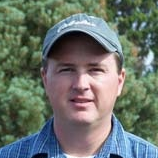Recent Advances in Soil Erosion and Sedimentation: From the Hillslope to Watershed
A special issue of Water (ISSN 2073-4441). This special issue belongs to the section "Soil and Water".
Deadline for manuscript submissions: closed (30 November 2022) | Viewed by 8805
Special Issue Editors
Interests: soil physics; soil erosion; land degradation and water quality; soil morphology and classification; surface and subsurface hydrology; environmental sensing and monitoring; geographic information systems; remote sensing; soil quality and environmental sustainability; modeling and computational tools in soil erosion and hydrology
Interests: ecohydrology; erosion; fire effects; plant community dynamics; wildland hydrology; infiltration and runoff
Special Issues, Collections and Topics in MDPI journals
Special Issue Information
Dear Colleagues,
Decades of soil erosion and sedimentation research have dramatically improved our understanding of detachment, transport, and deposition processes along the landscape continuum. Much of the historical soil erosion and sedimentation research is currently incorporated in a variety of soil erosion and hydrology models differing in their conceptual framework and scale of modeling. Nevertheless, fundamental challenges remain to be overcome before we achieve a complete and rigorous understanding of the complex processes governing the mobilization and transport of water and sediment in the landscape. This Special Issue will present scientific contributions dealing with conceptual, experimental, and monitoring studies of soil erosion and deposition processes at scales varying from the hillslope to the landscape. Topics of interest include, but are not limited to: (1) new conceptual frameworks for modeling erosion across scales; (2) scaling and connectivity of sediment along the landscape continuum; (3) use of novel or emerging technologies to study and/or map erosion and deposition; (4) transient surface conditions and factors affecting soil erodibility; (5) erosion and deposition in heavily managed agricultural systems (e.g.,irrigated areas); (6) erosion and deposition measurement in understudied regions; (7) climate change and soil erosion; and (8) coupling between wind and water erosion.
Dr. S. Kossi Nouwakpo
Dr. Jason Williams
Dr. Frédéric Darboux
Guest Editors
Manuscript Submission Information
Manuscripts should be submitted online at www.mdpi.com by registering and logging in to this website. Once you are registered, click here to go to the submission form. Manuscripts can be submitted until the deadline. All submissions that pass pre-check are peer-reviewed. Accepted papers will be published continuously in the journal (as soon as accepted) and will be listed together on the special issue website. Research articles, review articles as well as short communications are invited. For planned papers, a title and short abstract (about 100 words) can be sent to the Editorial Office for announcement on this website.
Submitted manuscripts should not have been published previously, nor be under consideration for publication elsewhere (except conference proceedings papers). All manuscripts are thoroughly refereed through a single-blind peer-review process. A guide for authors and other relevant information for submission of manuscripts is available on the Instructions for Authors page. Water is an international peer-reviewed open access semimonthly journal published by MDPI.
Please visit the Instructions for Authors page before submitting a manuscript. The Article Processing Charge (APC) for publication in this open access journal is 2600 CHF (Swiss Francs). Submitted papers should be well formatted and use good English. Authors may use MDPI's English editing service prior to publication or during author revisions.
Keywords
- soil erosion
- connectivity
- erodibility
- sediment transport
- erosion mapping
- irrigation erosion
- climate change
- hydrology
- wind erosion
- tillage erosion
Benefits of Publishing in a Special Issue
- Ease of navigation: Grouping papers by topic helps scholars navigate broad scope journals more efficiently.
- Greater discoverability: Special Issues support the reach and impact of scientific research. Articles in Special Issues are more discoverable and cited more frequently.
- Expansion of research network: Special Issues facilitate connections among authors, fostering scientific collaborations.
- External promotion: Articles in Special Issues are often promoted through the journal's social media, increasing their visibility.
- e-Book format: Special Issues with more than 10 articles can be published as dedicated e-books, ensuring wide and rapid dissemination.
Further information on MDPI's Special Issue polices can be found here.







